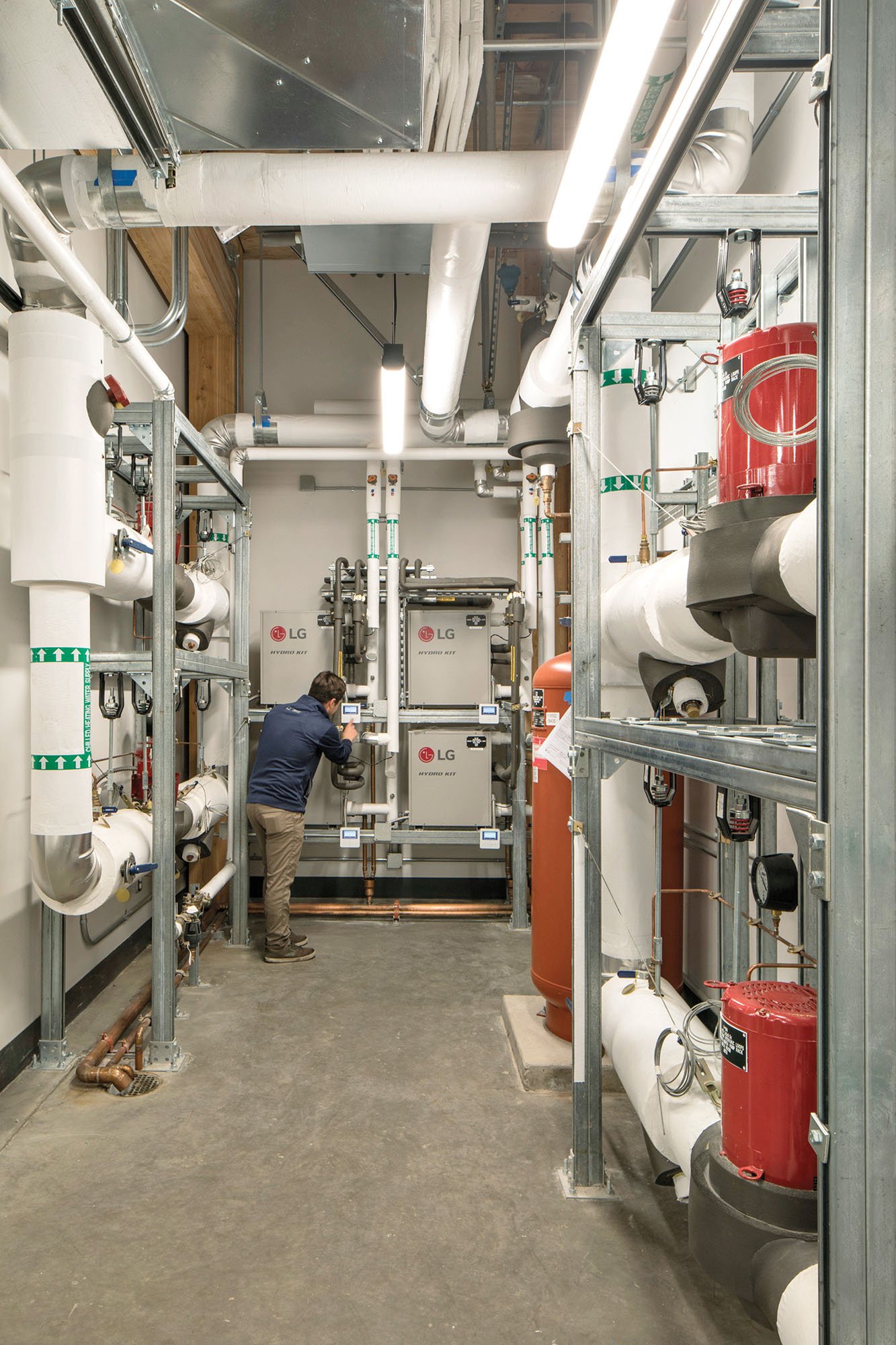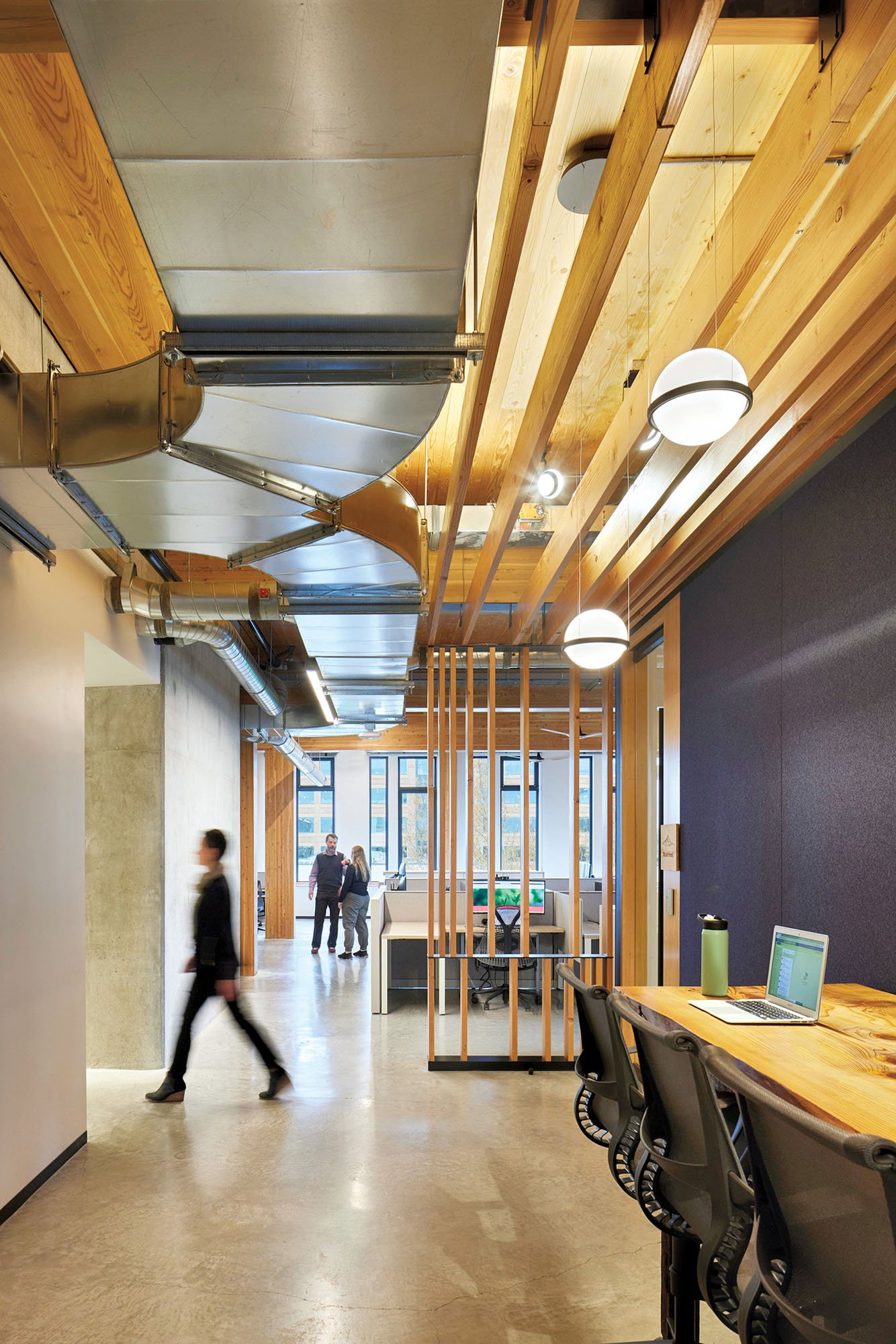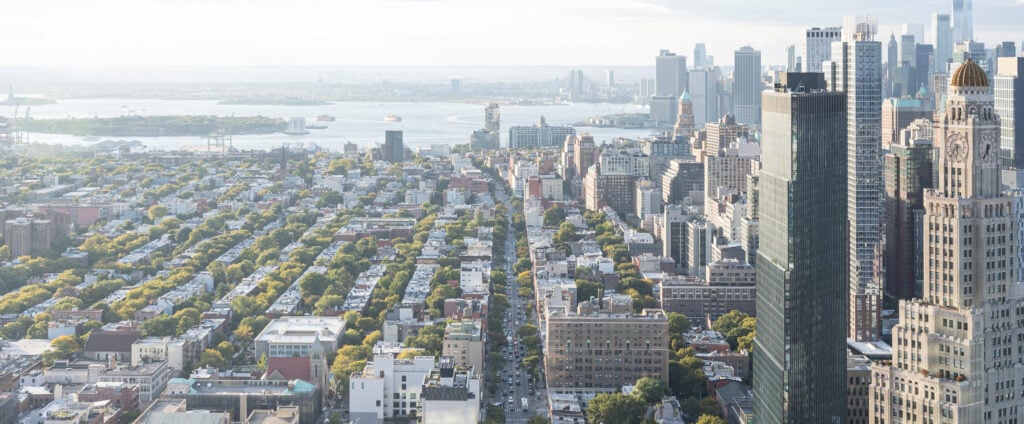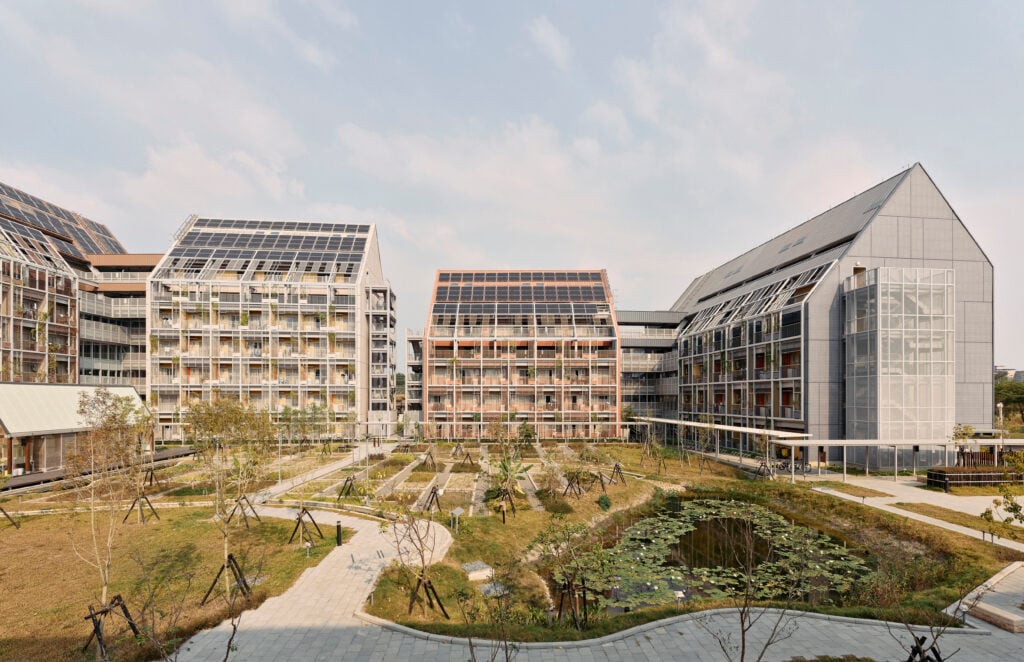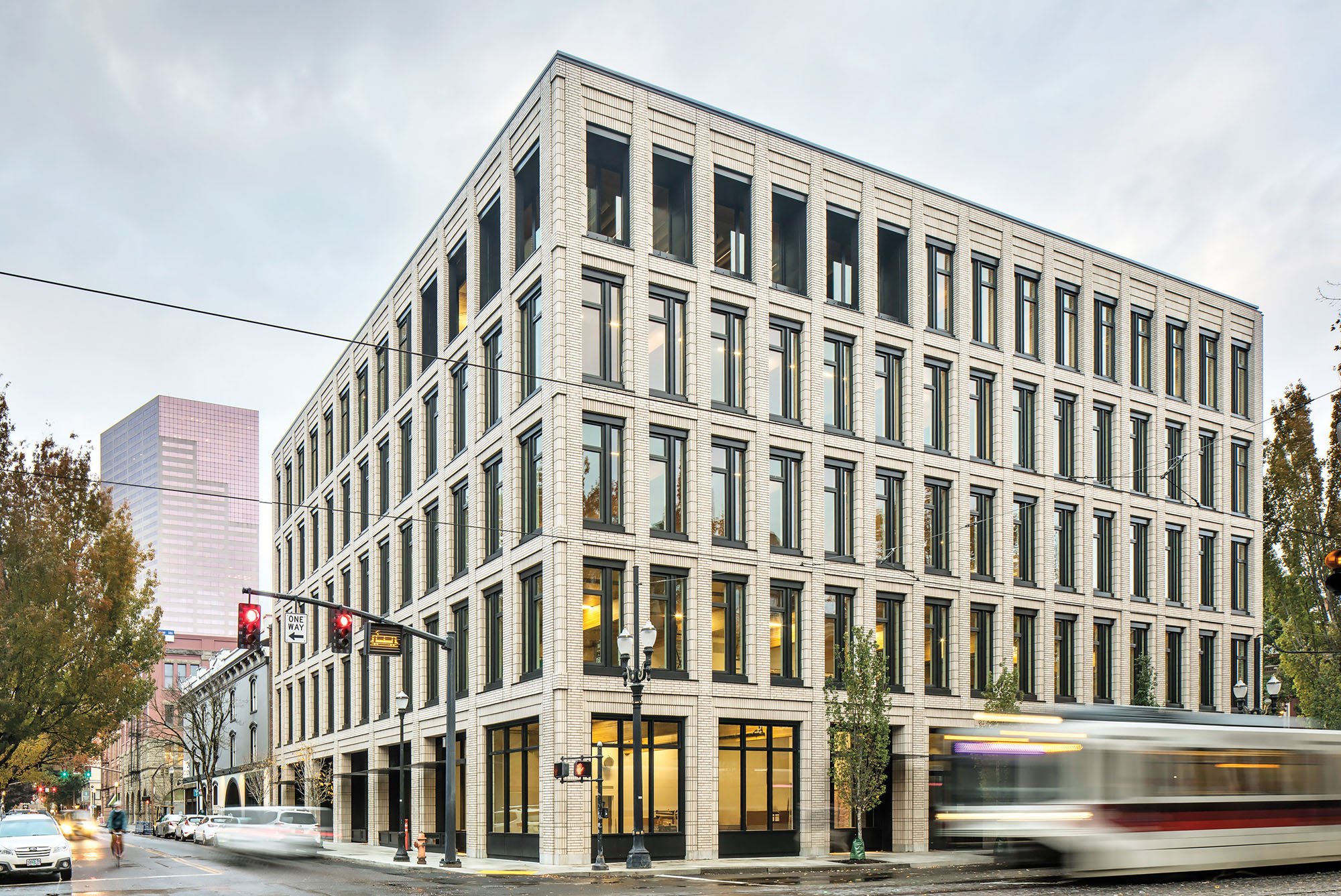
The PAE Living Building’s brick facade belies a technologically advanced, environmentally sustainable project that its architects anticipate will be the first Living Building Challenge–certified structure in the state of Oregon. COURTESY © LARA SWIMMER
December 21, 2022
The PAE Living Building Rises in Portland, Oregon
Portland, Oregon’s Skidmore/Old Town Historic District, with its 19th-century National Register–listed fabric of cast-iron architecture (and corresponding restrictions on height and style), might seem an unlikely place for what is expected to be the state’s first fully Living Building Challenge (LBC)–certified structure. The timing of the project, which broke ground in April 2020, just after the COVID-19 pandemic began, wasn’t ideal either.
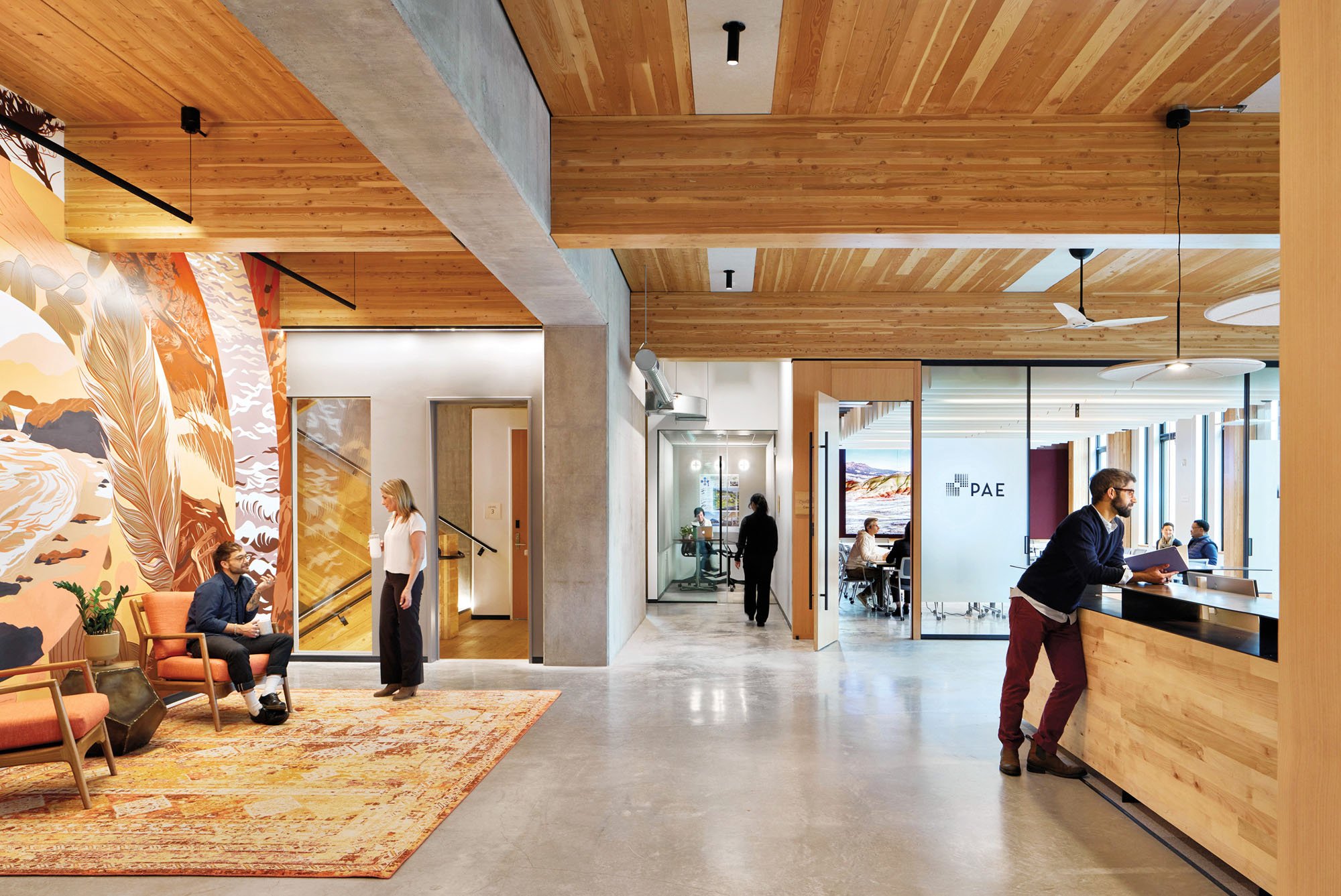
A structure made of glue- and cross-laminated mass timber reduced the project’s embodied carbon emissions by 30 percent and provides workers with a warm, welcoming interior. COURTESY © BENJAMIN BENSCHNEIDER
Yet the PAE Living Building, completed last fall and named for its anchor tenant, PAE Engineers, is a successful developer-led speculative office venture that comprises ground-floor retail and four floors of office space above—three and a half of which are already leased. The building was designed by ZGF Architects, itself founded in Portland, to be the first such project to meet LBC requirements, and at 58,000 square feet, the nation’s largest. It is expected to be fully certified in summer 2023, after a mandatory 12-month waiting period to track post-occupancy performance.
While the contemporary brick-clad exterior had to blend in with nearby historic buildings to win city landmark-commission approval, to meet LBC strictures the building had to do a lot more: generate all its own energy and then some, capture and treat all its water on-site, and meet carbon-related materials imperatives.
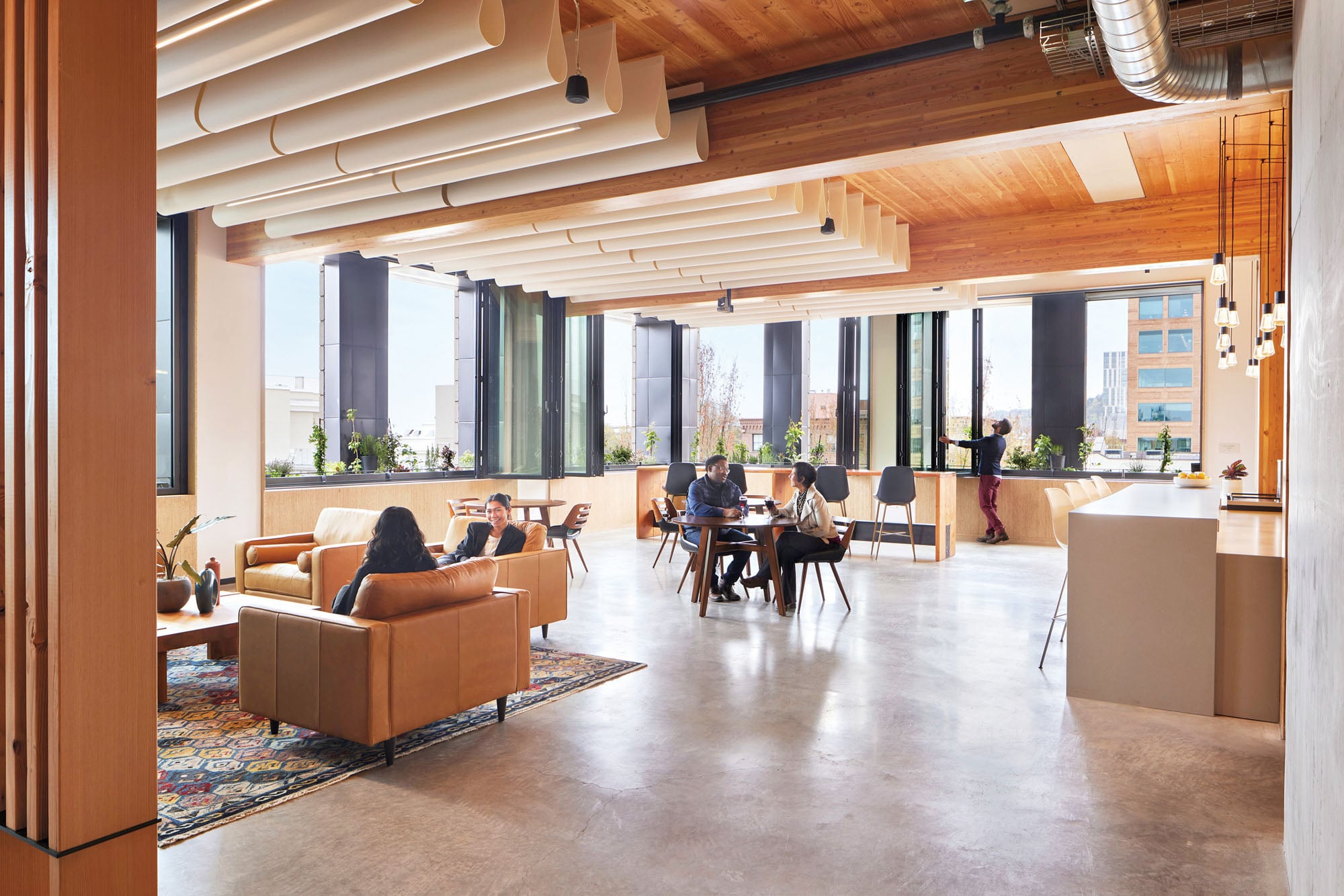
A space on the fifth floor that the design team dubbed the “deckony” (a portmanteau of “deck” and “balcony”) forms the social heart of the office. Its operable glass panels fold away when opened, connecting the common space to the fresh air and views outside. COURTESY © BENJAMIN BENSCHNEIDER
Still, to attract tenants, the PAE building had to offer “a rent that was acceptable, which meant people were willing to pay some premium but not a giant premium,” explains Jill Sherman of Edlen & Company, the project’s developer. “We really didn’t know going into it if that was feasible or not.” But features like natural ventilation, solar power, and timber framing have proved to be selling points—even as the market for office space cools.
Because PAE’s portfolio includes over a dozen LBC-certified projects, including 2011’s Bullitt Center in Seattle and 2015’s RMI Innovation Center in Colorado (with ZGF), its headquarters was a chance to demonstrate sustainable design’s evolution. That’s one reason the new building’s ground-floor attraction is a window into its utility room, although in this case that term seems incomplete.
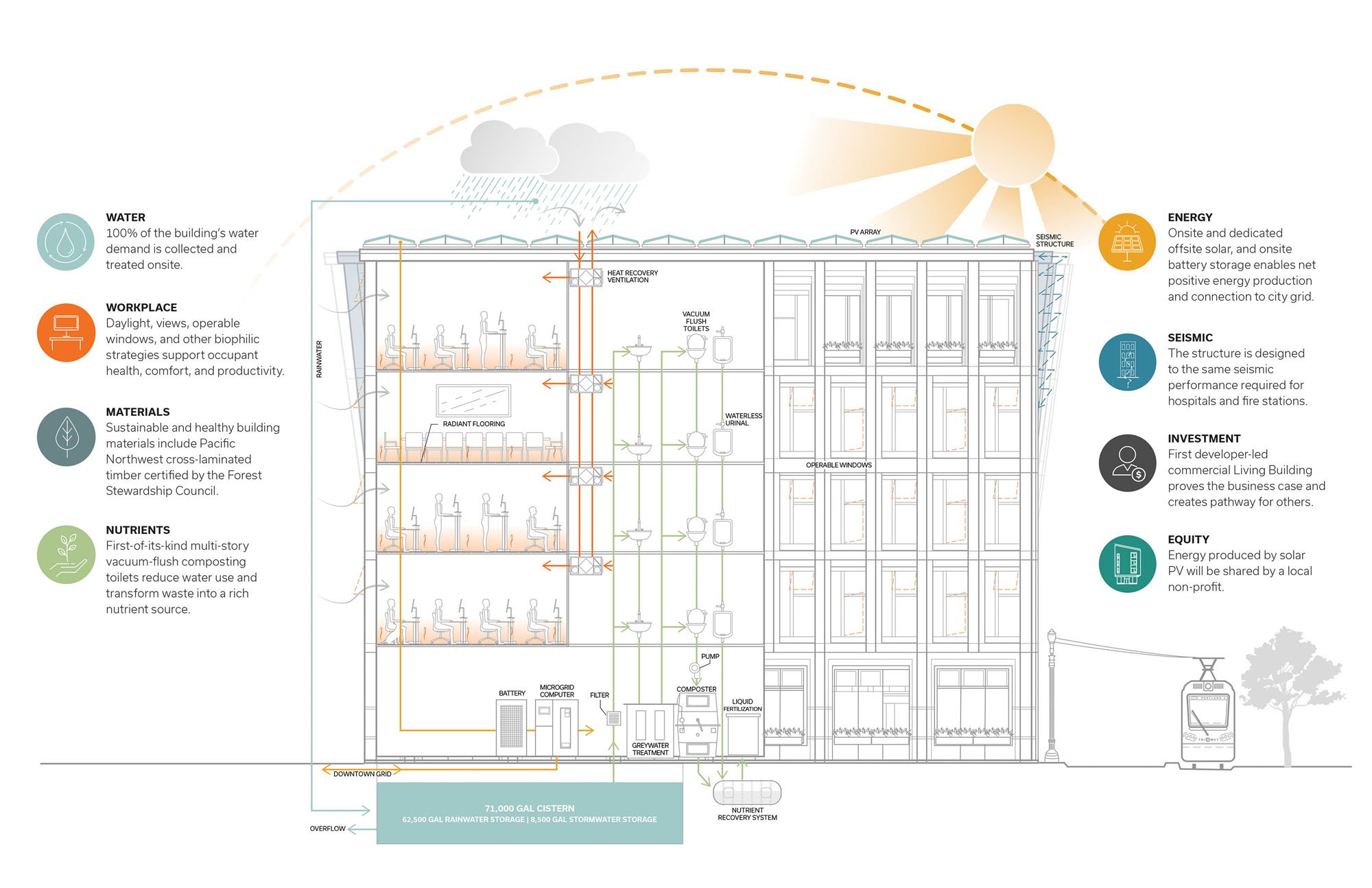
The PAE building’s designers expect that it will be fully certified as having met the Place, Water, Energy, Health & Happiness, Materials, Equity, and Beauty criteria of the Living Building Challenge in summer 2023, after a mandatory 12-month waiting period to track post-occupancy performance. COURTESY PAE
“Think of it less like a utility room and more like an ecosystem,” says PAE principal Marc Brune. “It’s a closed loop, and we’re generating things that are beneficial to the environment.” Utilizing a 71,000-gallon cistern, 100 percent of the building’s wastewater is collected and treated on-site. The building’s vacuum-flush toilets and composting waste system represent a functional (and olfactory) improvement over the Bullitt Center’s foam-flush toilets, Brune explains. Nutrients such as phosphorus and ammonium bicarbonate are drawn from the waste and sold as retail-grade plant fertilizer.
A tight thermal envelope helps the PAE building achieve a 53 percent energy savings over building code before solar harvesting. A 133 kW rooftop photovoltaic array is paired with a 280 kWh battery, allowing a two-way connection to give back to the city’s electrical grid and the ability to operate off-grid at a reduced capacity. The project also offsets its additional grid-derived energy use by providing a 215 kW off-site PV array to the Renaissance Commons, an affordable housing project across town.
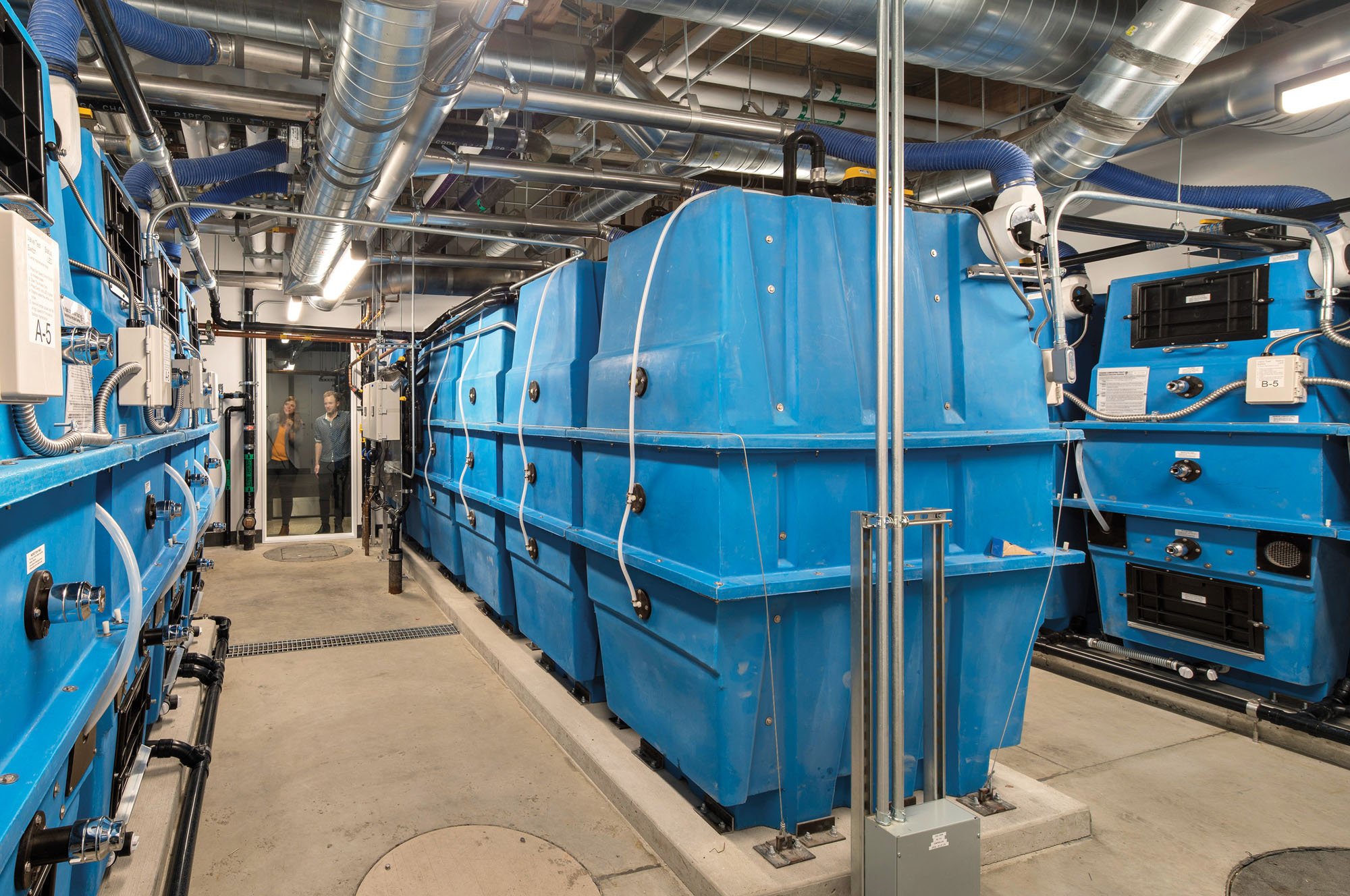
All of the building’s water needs are met via on-site rainwater capture and gray-water treatment. Nutrient recovery and a five-story vacuum flush composting system keep water use to a minimum.
WASTE NOT
Cisterns collect waste from the vacuum flush system and produce liquid fertilizer and agriculture-grade compost on-site, using no city water. Fertilizer and compost sales provide an extra source of income for the building’s owners. COURTESY © LARA SWIMMER
The building’s top floor features a 1,500-square-foot employee dining and gathering space with large NanaWall operable glass panels that fold away. “We’ve eroded the corner a little bit,” says ZGF Architects principal Justin Brooks. “It becomes like an outdoor space once you open all of the windows.”
Inside, the PAE building’s cross-laminated-timber structure is left exposed, helping to attract tenants as well as sequester carbon. Natural light is maximized by leaving the ceilings uncluttered by electrical conduits (embedded between floors) or even beams. Instead, upturned beams mounted into the floors have created a series of benched window seats. The PAE building also meets International Building Code Risk Category IV structural seismic standards, the same level required for hospitals and fire stations. Even in an earthquake or other natural disaster, it will likely be safe inside with the lights on and water running—that peace of mind helps attract and retain talent.
“People are 75 percent of our costs,” Brune says. “If we can get one percent better productivity, this building actually pays for itself. It’s a hard thing to quantify, but we believe it, and I feel like we’re seeing it already.”
Would you like to comment on this article? Send your thoughts to: [email protected]
Latest
Profiles
How Alloy Aims to Decarbonize Real Estate
The developer behind New York City’s first all-electric skyscraper and first Passive House public school shows us what the building industry could be.
Projects
Taisugar Circular Village is a Model Case Study for Circular Economies
The Taiwanese project by Bio-architecture Formosana claims to be the first residential village in the country to be integrated within a circular economy.
Viewpoints
3 Sustainability News Updates for Q1 2025
Local laws, easy-to-access tools, and global initiatives keep the momentum on green building going.



